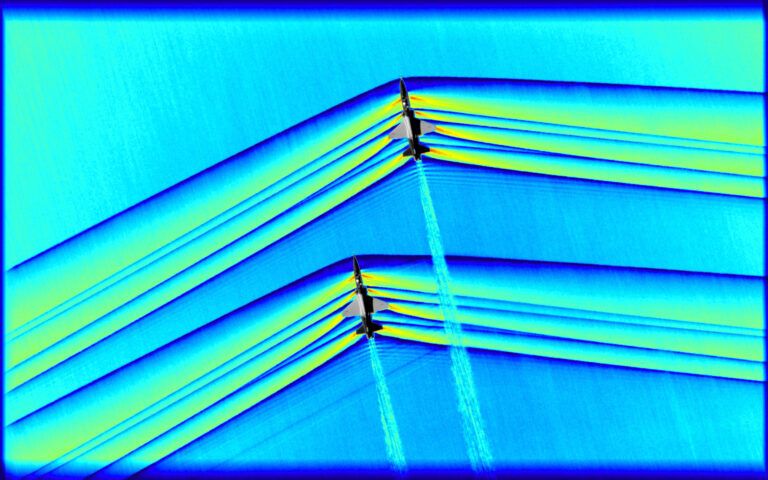Engineers in Europe and USA are testing the low boom concepts and technologies for the next generation of supersonic passenger aircraft.
Articles about Concorde often mention the aircraft’s technical successes. But the Concorde’s greatest legacy often goes unmentioned – it was the first supersonic civilian aircraft that showed the world just how noisy sonic booms are.
Today noise remains the greatest barrier to the introduction of civilian supersonic aircraft. Regulations around the world prevent the use of supersonic passenger aircraft overland because of the booms they create.
But since Concorde, engineers, aerodynamicists and more recently high performance computers, have worked fiendishly hard to solve the problem of how to quieten sonic booms. It has taken decades to devise low-boom technologies and designs that mitigate the phenomenon.
Companies such as Aerion, Spike and Boom are steadily progressing the development of supersonic civilian aircraft that range in size from business jets to small airliners. They insist there is market demand for ever-faster travel and that they have designs, which although largely untested at this point, make it possible in a sustainable way.
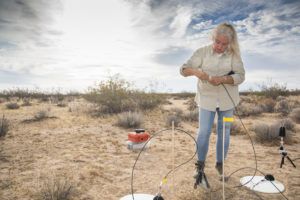
The progress being made in developing supersonic jets for civilian applications has prompted aviation regulators around the world to reassess the regulations that limit their operation. ICAO has set a 2025 date for a new international standard on permissible noise levels from supersonic aircraft while over ground. Meanwhile, the world’s leading aviation regulators and research agencies are developing and analyzing low-boom designs to assess their viability and to see if people can be expected to live with the noise they create.
Carpet DIEM
The USA’s Federal Aviation Administration (FAA) prohibits civilian aircraft from flying faster than Mach 1 over US territory. However, the FAA is working to change this legislation. Last year the regulatory body put forward proposals to set a limit on the sound made by supersonic booms during overland flight and earlier this year for the noise they make during take off and landing. These rules would be in place ahead of the 2025 date set by ICAO for an international standard.
The FAA’s regulations are supported by ongoing research work by NASA – mainly the X-59 QueSST (Quiet Supersonic Transport) project which aims to prove that low-boom supersonic aircraft can operate at noise levels of 75PNLdB. The X-59 aircraft will demonstrate low-boom technologies with a series of flight tests, starting with its first flight in 2021 and including a series of acoustic validation flights.
For the acoustic validation flights a pilot will fly the X-59 at supersonic speeds over microphones arrayed across the desert floor, an area called the carpet, near Edwards Air Force Base Test in California. The CarpetDIEM (Carpet Determination In Entirety Measurements) program aims to validate that the acoustic signature performance — how loud X-59 is as heard from the ground — matches engineer’s predictions for the different flight conditions that will then be experienced when it is flown over urban areas. After CarpetDIEM, community-response flight testing will take place over US cities to evaluate the perceived noise of the aircraft. As well as the FAA rules, the data from the flight tests will be used by ICAO’s Committee on Aviation Environmental Protection to help establish a sonic boom standard.
Last year phase one of CarpetDIEM was conducted. A 30-mile long carpet of 70 high-fidelity microphones capable of measuring 50,000 samples per second was set up in the desert to ensure that the technology, logistics and management of the acoustic testing was correct. Phase two of CarpetDIEM, which should happen early next year is mainly looking at how to reduce staffing. Ed Haering, NASA’s principal investigator for CarpetDIEM says, “We can’t have people at every single site, so we are looking into remote triggering using ADS-B off the aircraft to automatically tell the recorders to turn on and off, and Iridium Satellite communications from a central control centre that everyone will receive.”
NASA is developing bespoke recorders to use for X-59’s acoustic testing called the ground recording system (GRS). Five prototypes have been developed and the next phase of CarpetDIEM will test them. “They are research-quality recording systems designed to be in the field for days or weeks at a time, continuously powered by a batteries and a solar cell and able to communicate remotely,” says Haering.
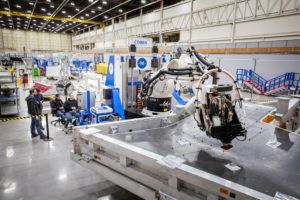
Palmdale, California
When community-response testing starts, its likely cellphone networks will be used instead of satellite communications. “We have been measuring and testing sonic booms for decades – the different parts of the carpet, centre, the edge, the beginning, how it affects structures and people. This is an extension of that, but this time we want all of the data from a massive array,” adds Haering.
The noise levels will be also be captured on and around the aircraft. Near field probing will see a F-15 fly around 200ft away from the X-59 to measure the pressure field around the aircraft. Air-to-air Schlieren imaging backlit by the Sun will be done to visualize the shockwaves and confirm the pattern. “It’s important to keep the little shockwaves off various components of the aircraft to prevent them from coalescing and making bigger shocks. The pictures will help us ensure the design is stopping that.
“We are confident enough to spend this time, money and effort to build a vehicle, because we think it will quiet enough. But we don’t really know if people will find it acceptable until we take it out into the communities. We’ll be looking at different times of year, weather patterns and demographics.
“CarpetDIEM is the proof of the pudding – It will determine if the aircraft as quiet as we hope and if it is quiet enough for people to live with.”
CarpetDIEM and QueSST is not being done in isolation. NASA keeps abreast with international cooperation. There are cooperative agreements with ICAO and the FAA and workshops on sonic booms.
The European RUMBLE
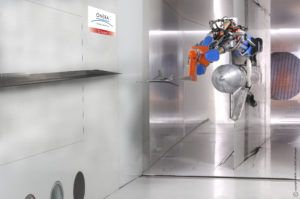
Similar research is being conducted in Europe. The EU’s RUMBLE (regulation and norm for low sonic boom levels) project started at the end of 2017 and aims to build scientific and ground data to help the different regulatory developments ongoing for supersonic aircraft. It is examining all aspects of sonic booms.
While Airbus is coordinating RUMBLE, the project has engaged scientists and engineers from across Europe and Russia. Gérald Carrier, a researcher from ONERA, is one of the people the French aerospace research agency has assigned to the project. He says, “We needed RUMBLE so we can better understand the complexities of sonic booms – to understand the physics better. There are a lot of variable parameters that effect how a sonic boom is experienced on the ground.
“We want to be more confident of our simulation capabilities and to gain knowledge of the human response to low sonic booms. All of this we need to do with the view of producing data to define a future standard for certification of future supersonic aircraft that protects people from unacceptable annoyances.
“RUMBLE is considering all of the physics of generation and the propagation of sonic booms through the air, from the generation in the near field of the aircraft down to how it is heard by humans on the ground, both indoors and outdoors. We are accounting for the effect of sonic booms on buildings and how it is felt by the human body.
“This means RUMBLE’s partners are looking at things such as the pressure, vibrations, frequency and amplitude, as well as the human psycho-acoustic response.”
Partners in the RUMBLE project are developing a sonic boom demonstrator that will be used in experiments involving human subjects. The simulator is a large set of speakers capable of reproducing the acoustic signal of a sonic boom from an input derived from a numerical simulation developed by Sorbonne University in Paris, France. “It can reproduce the low frequencies required to recreate the sonic booms to recreate the vibrational effects on a building’s walls and floors,” says Carrier.
This is similar to the Interior Effects Room at NASA Langley in Virginia, where there is a small living room with speakers built around it. Engineers can run pre-recorded sonic booms and “thumps of the future” that have been simulated by computer modelling. Haering says, “They can see if the walls are rattling and other aspects and assess the response from people about the level of noise.”
Elsewhere in the RUMBLE project, teams of engineers and scientists are designing low-boom aircraft and software tools capable of making accurate predictions about the noise levels of the sonic booms new low-boom shapes will make. “The models are capable of predicting the aerodynamic flows around the aircraft. We are designing aircraft shapes and surfaces to alleviate the sonic boom and developing codes for recreating boom propagation through the air,” says Carrier.
“We have found, for example, that accounting for real atmospheric conditions including humidity is very important when developing this simulation capability.
“We will also do wind tunnel testing in the coming months to validate the low boom shapes and the capabilities of the simulation tools.”
NASA’s QueSST will also look at the effect of atmospheric conditions on sonic booms. As the X-59’s speed and altitude change the noise it produces will get slightly louder or quieter. Haering says, “We aim to get a range of booms, so we can know what people find acceptable and present that to the regulators so they can decide what is appropriate.”
Turbulence mostly affects the loudness of the boom in the last few thousand feet near the ground. On the whole it makes average loudness lower. But some parts of the boom may be made louder by turbulence. A 2016 NASA testing program called Sonicbat, which used an F-18 has already examined this phenomenon.
“The next step is testing with X-59. We think that the shape of the aircraft will reduce the effect of turbulence compared to a traditional supersonic aircraft,” says Hearing.
Real and virtual
The first test flights for RUMBLE were conducted earlier this year in Russia by the TsAGI research institute. Similarly to NASA’s research, military aircraft were used. “There were two flight test campaigns to produce and measure data on the ground, including inside buildings to validate simulation models for aircraft,” says Carrier. “The aim was to get real life data to validate boom propagation code and modelling of the response from buildings to sonic booms.”
Another objective of RUMBLE is to develop a virtual supersonic demonstrator aircraft in partnership with Dassault and Airbus. This will be used to work out the weight and the handling qualities of future low-boom supersonic aircraft. However, Carrier insists that the aim is not to build Concorde MK2.
“The goal of RUMBLE is to develop scientific knowledge, data and simulation code to help the design of future regulations related to sonic booms,” he says. “It is to anticipate what a sonic boom standard for aircraft will be.”
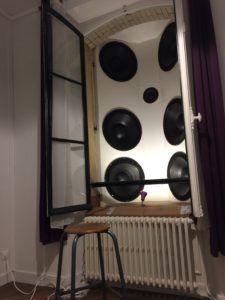
The project is looking at the latest low boom technology, which has been made possible thanks to advances in aerodynamics. Carrier says, “There has been a revolution since the design of aircraft like Concorde, or military jets that produce the classic loud N-wave sonic booms that are impulsive with high pressure amplitude.
“The incursive aspect of these types of sonic booms, caused by the rapid change of pressure between the booms is problematic. Noise of this type of sonic boom is simply unacceptable.
“But the aerodynamic shaping technology that has been developed over the last 15 to 20 years has been a game-changer. The sonic booms produced by a supersonic aircraft can now be much quieter. The effect is now more like a sonic thud – a much more rounded and progressive sound, comparable to a normal sound instead of an explosion or gun being fired.”
“We are aware that the prospect of supersonic travel is controversial. But considering the push from the USA towards supersonic aircraft, there is a strong need for Europe to have the capability to evaluate the environmental aspects of supersonic aircraft.”


